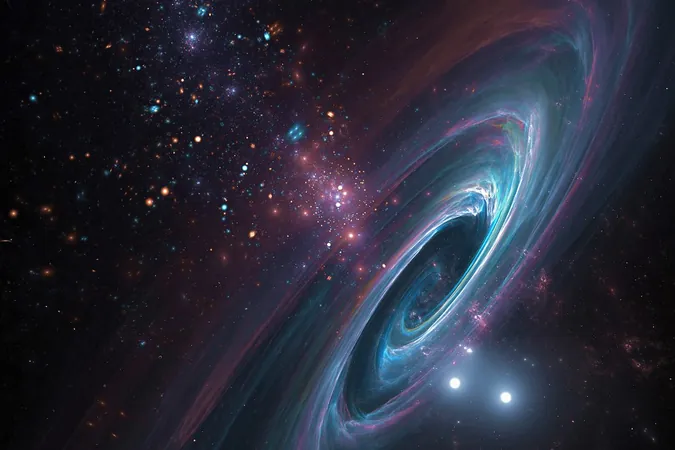
Unlocking the Mystery: 100 Million Hidden Black Holes in Our Galaxy!
2025-09-14
Author: Wei Ling
You might think astronomers have the universe's black holes all figured out, thanks to stunning images from the Event Horizon Telescope and groundbreaking gravitational wave detections by LIGO. The James Webb Space Telescope has even captured images of active black holes from the early Universe, revealing their elusive nature.
But here's the twist: despite these remarkable advancements, many black holes remain shrouded in mystery. The most prevalent type, formed from the death of massive stars, hovers alone across our vast Milky Way, with estimates suggesting there could be as many as 100 million of these solitary giants!
While binary black holes can be detected through their gravitational interactions with companion stars, only one isolated black hole has ever been identified, and that was through the gravitational lensing of light from a distant star.
A Game Plan to Find Them!
Enter Lena Murchikova and Kailash Sahu, two visionary scientists with a strategy to pinpoint these elusive dark objects. Their research starts with the understanding that we should be surrounded by local black holes—about 35 within 150 light-years of Earth!
Black holes are notorious for not emitting light on their own, but when they consume nearby material, they can create an accretion disc that emits brilliant light, allowing us to potentially detect them.
The Hunt for Visibility
Could any of these nearby black holes be consuming matter at a rate that we can observe? Murchikova and Sahu's calculations suggest that black holes moving through dense regions of gas and dust could light up enough to be spotted by advanced telescopes.
However, those dense areas are rare, making the odds of catching a black hole in action quite slim. The real jackpot might be found in a region known as the Local Interstellar Cloud—a rich area of gas and dust that our Solar System is currently traversing.
Flicker of Hope?
If a black hole were to pass through this cloud, it could gather enough material to shine brightly, detectable with just a few hours of observation. The clever insight from the researchers is that these black holes would exhibit rapid changes in brightness, flickering on millisecond timescales.
By focusing on high-frequency light changes, we could isolate our nearest black holes from other variable celestial objects. Thanks to the Vera C Rubin Observatory in Chile, which can monitor changes as frequently as every 15 seconds, we may soon reveal our hidden cosmic neighbors.
If Murchikova and Sahu's predictions hold true, we could soon bring these elusive black holes out of the shadows and into the spotlight. The quest to understand our galaxy just became even more thrilling!



 Brasil (PT)
Brasil (PT)
 Canada (EN)
Canada (EN)
 Chile (ES)
Chile (ES)
 Česko (CS)
Česko (CS)
 대한민국 (KO)
대한민국 (KO)
 España (ES)
España (ES)
 France (FR)
France (FR)
 Hong Kong (EN)
Hong Kong (EN)
 Italia (IT)
Italia (IT)
 日本 (JA)
日本 (JA)
 Magyarország (HU)
Magyarország (HU)
 Norge (NO)
Norge (NO)
 Polska (PL)
Polska (PL)
 Schweiz (DE)
Schweiz (DE)
 Singapore (EN)
Singapore (EN)
 Sverige (SV)
Sverige (SV)
 Suomi (FI)
Suomi (FI)
 Türkiye (TR)
Türkiye (TR)
 الإمارات العربية المتحدة (AR)
الإمارات العربية المتحدة (AR)